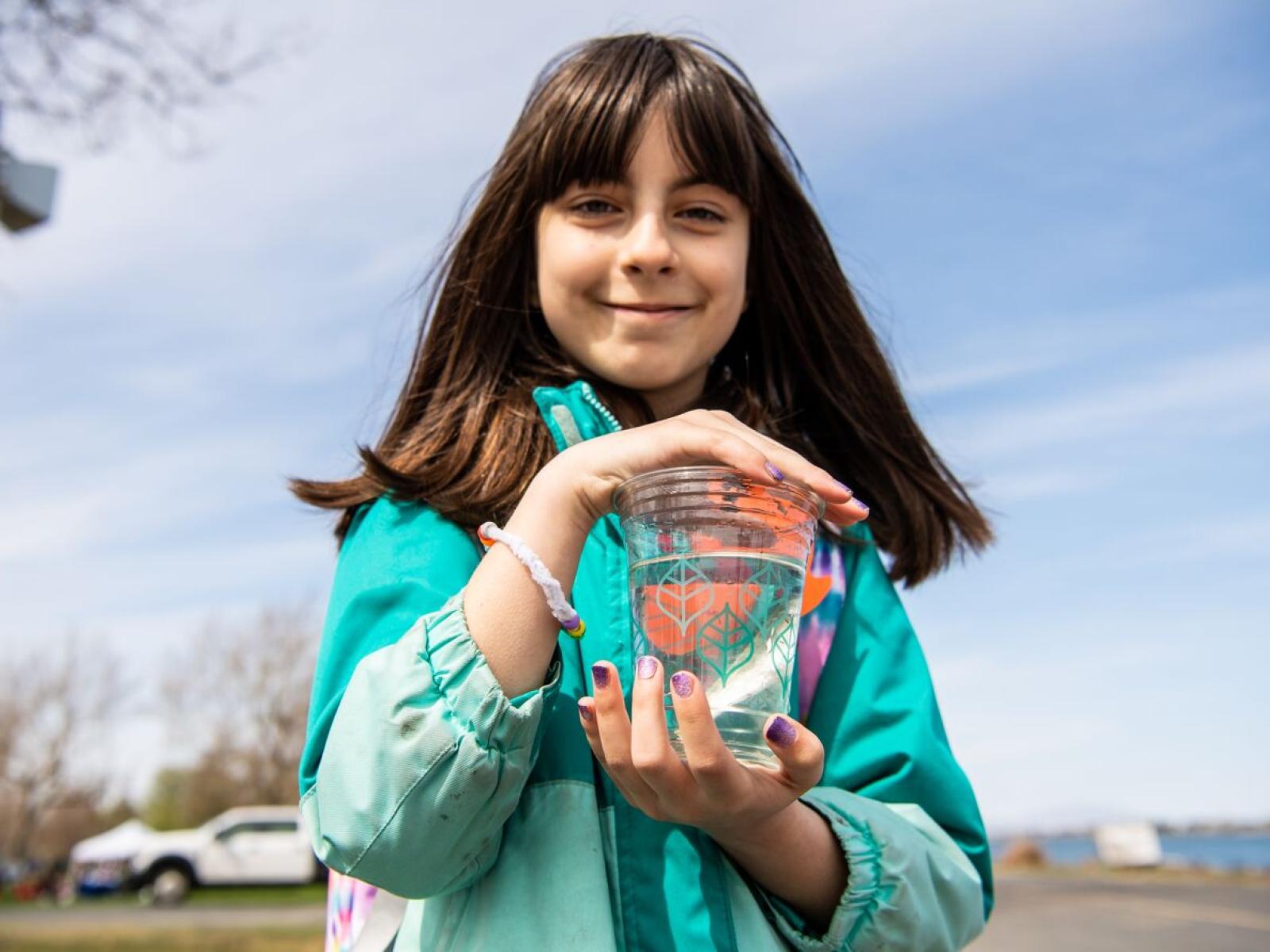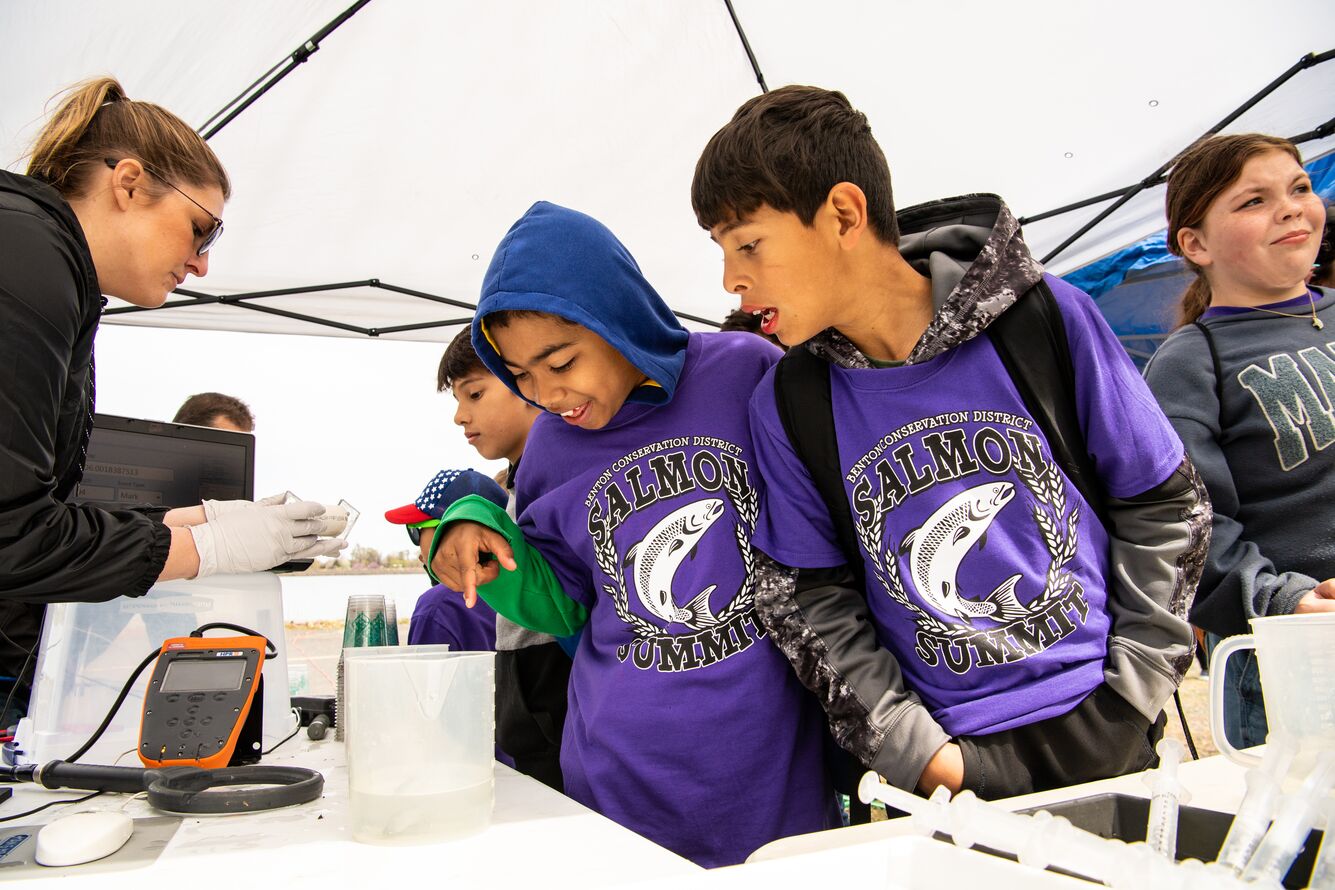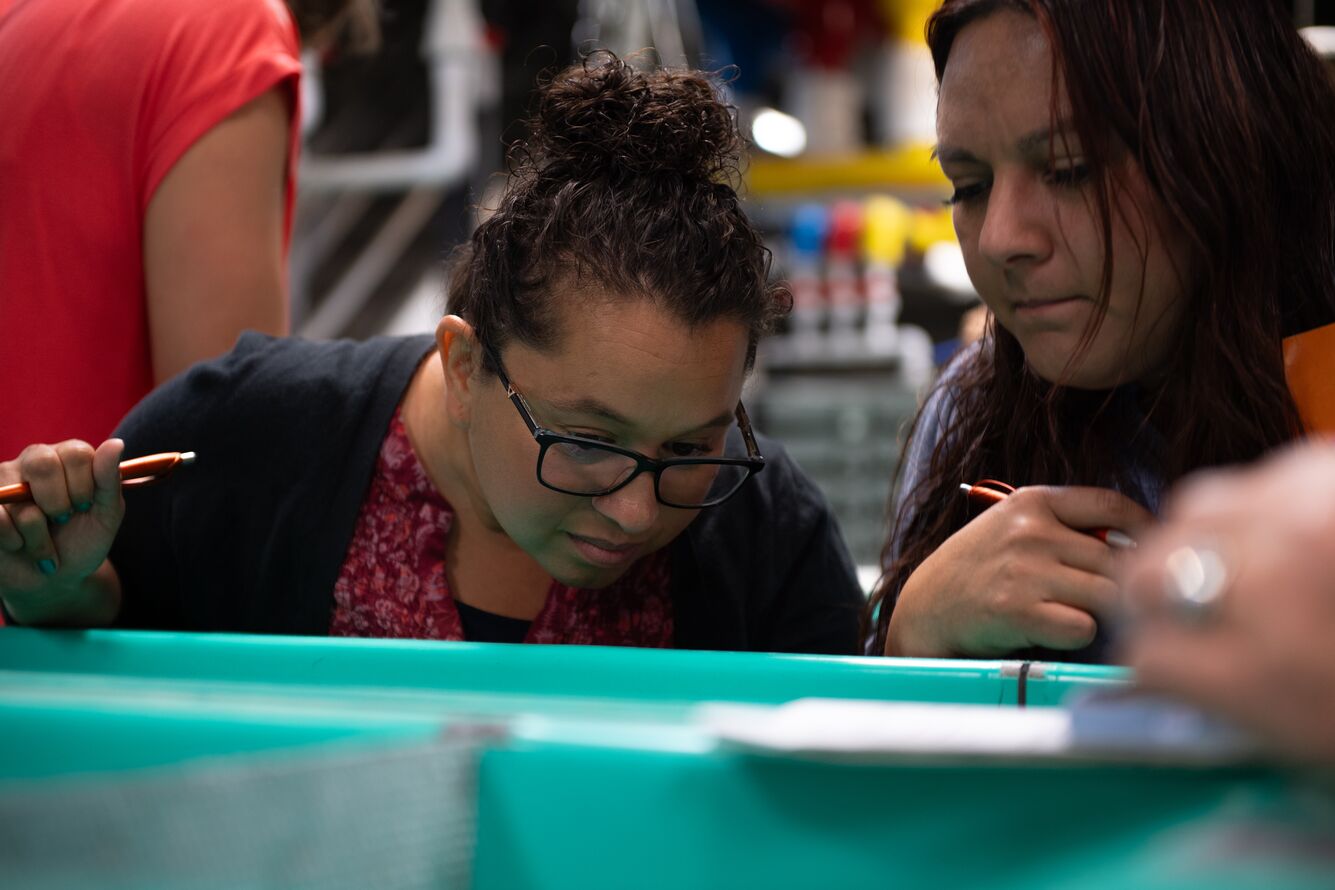Educational Programs Foster Downstream Hydropower Workforce
Pacific Northwest National Laboratory brings STEM experiences to students and teachers

Students who participate in Salmon Summit connect the raising of salmon in their classrooms with jobs available in their community, generating discussion and interest in available careers.
(Photo by Andrea Starr | Pacific Northwest National Laboratory)
In planning for the future of hydropower in the United States, the industry recognizes the need for a diverse and well-trained workforce. An important part of the Department of Energy Water Power Technologies Office’s (WPTO) work to inspire and train the future workforce is fostering an interest in science, technology, engineering, and math (STEM) fields from a young age. Pacific Northwest National Laboratory (PNNL) hydropower researchers and STEM Education staff support these efforts through a variety of hands-on educational programs.
“Introducing students to hydropower research not only supports future workforce development, it is also a great introduction to many STEM fields, such as biology, data science, and engineering,” said PNNL Hydropower Program Lead Alison Colotelo. “Especially here in Eastern Washington, learning about fish passage through hydropower facilities is also a great way to teach students about local resource conservation, along with the region’s history and geography.”
Salmon Summit

One such effort has been a rite of passage for Benton County, Washington, fourth and fifth graders for a quarter of a century. In April 2023, PNNL hydropower researchers made their annual contribution of time and expertise to Salmon Summit, which gives local students a unique opportunity to learn about how salmon move through the rivers that pass by their schools.
At the event, PNNL researchers show students how fish are tagged to monitor their movements through hydropower facilities and introduce them to different careers in fish passage research. PNNL fish passage experts—many of whom discovered an interest in STEM careers through similar events they attended as students—also explain how data collected about migrating salmon help researchers understand more about fish populations, impacts on different communities, and passage through hydroelectric dams to inform even safer designs and operations for future hydropower facilities everywhere.
Benton Conservation District has led this event—the culminating activity of its annual Salmon in the Classroom curriculum—for more than two decades. Since 2021, WPTO support has allowed PNNL to provide a virtual opportunity to engage in its tagging station. Approximately 500 students participate in PNNL’s station each year, and another 3,000 benefit from the experience virtually in their classrooms.
Whether in-person or streamed, Salmon Summit provides an “out-of-classroom” experience that is critical to reinforcing lessons from the classroom. Teachers noted that this event allowed students to connect the raising of salmon in their classrooms with jobs available in their community, generating discussion and interest in available careers. The event also highlighted the integration of technical disciplines, including how technology can be used to learn about salmon, which supports Washington State Science and Learning Standards.
“I think it’s great the amount of exposure these kids get to STEM jobs so that they know what kinds of opportunities are out there for them,” said data scientist and 2023 PNNL Salmon Summit participant Erin McCann. “When I was a kid, I didn’t even know that fish biologist or data scientist was a job someone could have."
Teacher-Scientist Partnership

Another example of a hands-on STEM effort is PNNL’s Teacher-Scientist Partnership (TSP), an annual professional development program created and led by PNNL STEM Education, typically for middle and high school STEM teachers. TSP participants solve scenario-based problems from the real world in areas such as marine energy, data visualization, and the clean energy transition, aligning them with Washington State Science and Learning Standards. Connecting research and classroom experiences helps both educators and PNNL researchers guide the next generation of STEM professionals, STEM teachers, and a science-aware community.
“Working with STEM professionals outside the classroom helped me see how I could incorporate local, real-world connections for my students,” said TSP participant Katie Stover, a third-grade teacher at Franklin STEM Elementary School. “This program allowed me to gain a deeper understanding of how scientists and engineers work together to create a better future. Through this experience, I feel better prepared to help my students understand the current challenges our region faces and empower them to pursue STEM careers to solve them.”
The 2023 TSP was developed to deepen the learning for teachers who participated in the 2023 Salmon Summit. TSP participants were challenged to develop recommendations for long-term monitoring approaches for fish populations within the Pacific Northwest’s Columbia River Basin. As part of this training, teachers were guided through the challenge by an interdisciplinary PNNL team, completing activities related to water quality testing, fish measurement, and science communication.
Visit PNNL’s Hydropower and STEM Education web pages to learn more.
Published: November 7, 2023